Shammi Kapoor was, undoubtedly, one of the top 20 superstars of Indian cinema, and so expectedly, finds a place for himself in an upcoming book titled Bollywood's Top 20: Superstars of Indian Cinema.
Penned by journalists, the book will release in January.
Shammi's chapter has been penned by Nasreen Munni Kabir, who has written on film legends like Lata Mangeshkar and A R Rahman before.
We present an excerpt:
In April 1955, during the location shooting of Rangeen Raaten in Ranikhet, a hill station, Shammi fell in love with the beautiful Geeta Balli, who appeared in a cameo role in the film. They shared the same interests in music and got on famously.
From April to July that year, Shammi pursued Geeta relentlessly, proposing to her several times. But she refused to marry him, saying that she had many responsibilities vis a vis her family. They met again in Bombay in August, during the monsoons, and on the spur of the moment, Geeta agreed to marry Shammi as long as they could marry at once.
"My parents were in Bhopal touring with their theatre group, and I was at a loss to know what to do. So we went over to my friend Johnny Walker's house. We figured he could tell us how we could marry that very day because he had married Noor just the week before.
"Johnny said: 'Have you gone crazy? I'm a Muslim and we were married in a mosque, you are Hindus, so go to a temple.'
"The difference between Hindu and Muslim hadn't even occurred to us, we were so much in love. We then met the producer Hari Walia and he said we could marry immediately if we went to Banganga." (Kapoor, Filmfare, 20 May 1960).
They rushed over to Banganga and chose one of the many temples there. But the doors of the temple were closed and the priest told them the Gods were resting and that they should return the next day at 4 a.m. Shammi and Geeta then went to his Matunga house and had dinner prepared by the cook. At 4 the next morning, on 24 August 1955, they returned to Banganga to find "the Gods waiting for them" and were married in a simple ceremony.
Excerpted with permission from Penguin Books India from Bollywood's Top 20: Superstars of Indian Cinema, edited by Bhaichand Patel Viking. Rs 599.
'Shammi Kapoor considered giving up films'
Image: Shammi KapoorShammi Kapoor and Geeta Bali had a happy married life and soon became proud parents of two children, Aditya (born in 1956) and Kanchan (born in 1961).
While home life was good, Shammi had started to tire of acting in uninspiring melodramas, and wearing silly wigs and riding horses in stunt movies.
He was well aware that the doors of opportunity had opened to him primarily because of his surname, but this came laden with responsibility: "Being the son of Prithviraj Kapoor and the brother of Raj Kapoor, people were bound to expect great things from you and set you up against the standards they had already achieved. I still remember a review of my second picture Rail ka Dibba. It said: 'Shammi Kapoor apes Raj Kapoor.'
"It hurt a lot because I didn't understand what it meant to ape somebody because I wasn't aping. I came from the same school of acting. We were from the same stage and had done the same roles. But it made me realise that it was going to be tough.
"When I married the star Geeta Bali, I was in even deeper trouble. Then I was no longer only the son of Prithviraj Kapoor, and brother of Raj Kapoor, but I was also the husband of Geeta Bali. That's three-to-one. It gave me a challenge, an incentive to go out there and prove myself." (This and all subsequent quotes are from Shammi Kapoor's Movie Mahal interview by NMK, 1987)
It also didn't help that the 1950s belonged chiefly to three actors: Dilip Kumar, Raj Kapoor and Dev Anand. The best roles were tailored made for them, and all other actors were routinely considered second choice.
At one point, Shammi Kapoor even considered giving up films and finding a job as a manager on a tea plantation in Assam. His wife, Geeta Bali, advised him against making a hasty decision and persuaded him to stick it out.
'Mohammed Rafi sounded more youthful and flirty when he was singing for Shammi'
Image: Shammi Kapoor and Ameeta in Tumsa Nahin DekhaThe opportunity of turning things round was at last on the horizon thanks to Filmistan's co-owner, Shashadhar Mukherjee. Mukherjee had decided to give his writer Nasir Hussain a break as director. They even had the title of the film, Tumsa Nahin Dekha, but not the lead actor.
"Nasir Hussain wanted Mr Dev Anand but didn't get him. He wanted Sunil Dutt but didn't get him either. So Mr Sashadhar Mukherjee thrust me on Nasir Hussain and said: 'Try this lad. Let's see how it works out. I see some greatness in him.' I don't know how he saw any greatness in me, but that inspired me a lot. I had nothing to lose, so I went all out, changed my image, shaved off my moustache, got myself a crew cut, and there grew the yahoo image."
When Tumsa Nahin Dekha was released in 1957, cast opposite Ameeta, Shammi Kapoor impressed with his intuitive and fresh acting, playful edge and great physical agility, which involved jumping, leaping and general cavorting.
Most importantly, he exuded an unabashed and irresistible sexuality that was far from the prudish heroes of the time, who projected romanticism but rarely sexuality. With his dreamy eyes, soft voice, charming dialogue delivery and arresting personality, Shammi radiated the raw appeal of an Elvis Presley -- especially evident when performing the songs.
Watch the title number Tumsa nahin dekha or Chupne waale saamne aa on Youtube and the excitement he generated is plain to see. Even Mohammed Rafi, who sang these fabulous numbers, sounded more youthful and flirty than he had ever done before, because he was singing for Shammi.
'Nearly four years after his first film and 19 flops later, Shammi became an overnight star'
Image: Shammi Kapoor in Dil Deke DekhoNearly four years after his first film and nineteen flops later, this essentially girl-meets-boy story catapulted the hazel-eyed Shammi Kapoor into an overnight star. He instantly won an army of fans from all walks of life, and frontbenchers to the elite took a shine to his fantasy character.
The title of the film, Tumsa Nahin Dekha, was undoubtedly meant to describe the hero's sweetheart, but it was Shammi who was the one never seen before.
The next big hit was Dil Deke Dekho (1959), also directed by Nasir Hussain. In this light-hearted romance, he was cast opposite newcomer Asha Parekh.
The film proved that Shammi had lasting and captivating talent. He was quickly dubbed a dancing hero and a rebel star.
These descriptions, credited to LP Rao, the then Filmfare editor, were in direct contrast to the ruling trio: Dilip, Raj and Dev, who were not considered dancing heroes or rebellious for the most part.
Shammi Kapoor didn't have the brooding quality of James Dean, the famous Hollywood rebel, but in the Indian context, he was a rule-breaker with a brazen attitude towards prudishness -- and a light disdain of parental authority and conventional behaviour. The young urban middle-classes of the 1950s became fascinated by him because they too longed for an individual voice, and yearned for his kind of romance, free of the do-s and don'ts of traditional society.
'Junglee gave Shammi Kapoor a career-defining role'
Image: Azra and Shammi Kapoor in JungleeShammi Kapoor did not seriously dent the popularity of the great trio of Hindi cinema, yet nevertheless was the only actor, at the height of their reign, who managed to create a separate space.
Another important difference was that the triumvirate, as Dilip Kumar, Raj Kapoor and Dev Anand were called, were considered by audiences as "men" -- similar to the way their Hollywoodcounterparts, including Gregory Peck, Gary Cooper or Clarke Gable were regarded.
In addition, the famous three were usually seen in mature and solemn roles -- often playing characters burdened by duty towards family, or struggling against repressive social norms that came in the way of their ambitions and romantic choices.
On the other hand, Shammi Kapoor stirred in the audience a great appetite for hip, affluent and carefree young heroes -- good-looking "boys" who brazenly stole hearts and whose stories were fun to tell.
In 1961, Junglee gave Shammi Kapoor a career-defining role. In this wonderful film, he plays Chandrashekhar, a sour young rich man who is transformed by his love for a young woman whom he meets in Kashmir.
The film was originally titled Mr Hitler and when Dev Anand said no to the project, it went to Shammi. Here again, he was cast opposite a newcomer, the beautiful Saira Banu. In fact, he was often cast with newcomers, including Ragini in Mujrim, Kalpana in Professor and Sharmila Tagore in Kashmir Ki Kali.
'Shammi knew how to perform songs, had smart comic timing'
Image: Shammi Kapoor in JungleeJunglee was unusual for another reason. In the early sixties, colour photography was just too expensive and regarded as something reserved for the historical or mythological film. Even the budget of the majestic Mughal-e-Azam, released in 1960, only permitted the filming of four reels in colour.
Subodh Mukherjee, however, believed completely in Junglee and it gave him the courage to make this typical musical romance in colour.
"The very idea of Junglee was so different. Everyone thought it was a big risk. We were taking Shammi Kapoor, an actor identified with singing songs and jumping about, could he do the serious role of a big industrialist who doesn't smile, who belongs to a very strict, orthodox and disciplined family?"
He proved the skeptics wrong. He knew how to perform songs, had smart comic timing, but could also go from serious to light-hearted, as required by the hero's character.
Shammi Kapoor delivered his finest performance in Junglee, and the title song with its yahoo cry (famously recorded by his friend, the actor/writer Prayag Raj) firmly established his status as a youth icon.

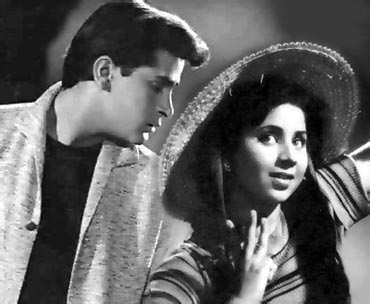
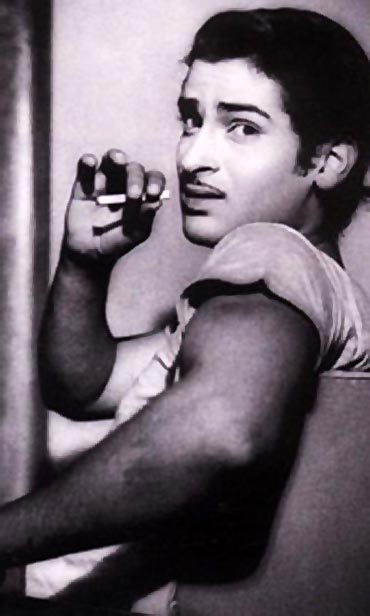
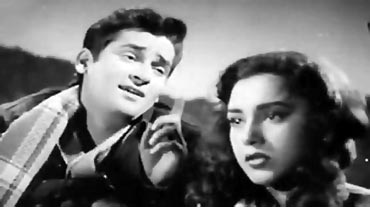
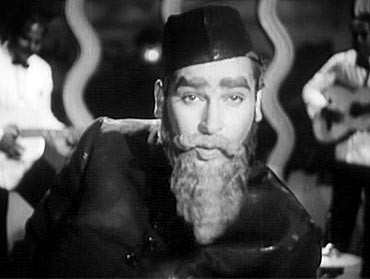
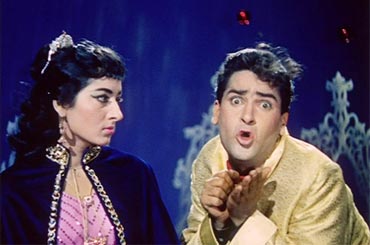
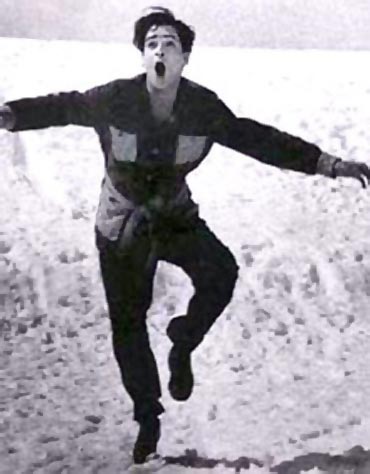
Comment
article